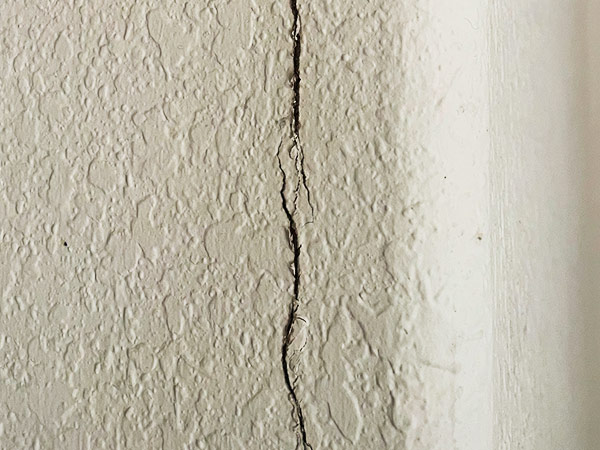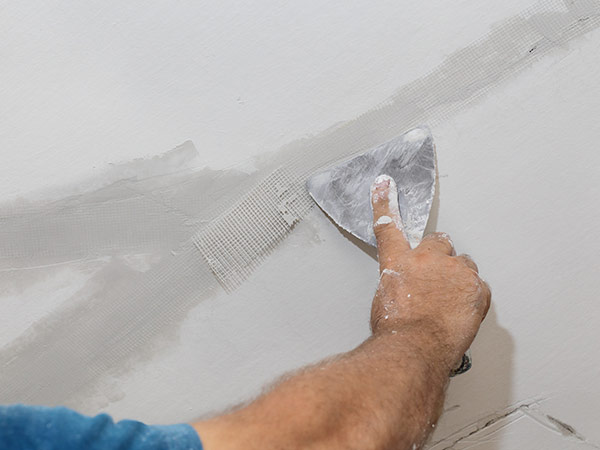

Foundation Problems and What to Do
Wall cracks, uneven floors, and doors that don’t close. Foundation problems are something no one wants to think about or deal with. However, your foundation is important to the overall wellbeing of your home. But even at the very basic level, how do you know what is normal house settling and what is truly a problem? Let’s discuss house settling and how foundation problems occur, but most importantly what to do about it.
Normal House Settling vs. When to Worry
A house settles because the soil underneath a foundation is not stable and because of this, all structures will settle a bit. This usually happens within the first few years after construction. Most of the time, it is no cause for worry if it has settled evenly. Problems come when there is differential settlement which is an uneven settlement. No matter what type of foundation you have—whether it be basement, pier and beam, slab-on-grade, or slab-on-stem wall—differential settlement can not only cause cosmetic issues but also affect the safety of your home.

Soil settles and foundations shift because the water table where groundwater meets the soil rises due to heavy rainfall or ice freezing and melting. Water pushes on the soil creating hydrostatic pressure that moves the soil and shifts the foundation. This expansion and shrinkage create unstable soil conditions that can move the foundation in several ways including pushing up or down, in a way that rotates the structure, or a sideways push that moves the foundation wall outward from the structure.

How Do I Know if I Have Foundation Problems?
Cracks in your walls, ceilings, and concrete are the biggest signs that you have foundation problems. Often, these cracks are in the drywall at the corners of doors and windows. You can further test this by placing a level on door or window jambs and testing how level they are. If the level is off in one direction on multiple places in your home, you can get a good idea of how your foundation is moving.
You could also notice unlevel flooring. If you suspect that you have uneven floors, take a marble or some other item that rolls and place it on the floor. If it starts to roll without any force on it, your floor might have shifted because of your foundation. A caution though: these issues may indicate other problems and you should always consult a structural engineer for a complete diagnosis.
Cracks in concrete are a tell-tale sign of foundation problems. There are different ways cracks can go including hairline, vertical, diagonal, horizontal, and stair-step. If your cracks all go in the same direction, that is an easy way to tell how your foundation has shifted. Keep in mind that hairline cracks are not always related to foundation problems. A crack that is active, though, is cause for concern. If you notice a crack getting bigger over time, consult a structural engineer for a diagnosis.
Warning: If you see a crack getting bigger in real time, the structural integrity is weakening. You should leave the building and call a professional immediately.


Ways to Fix Foundation Problems
As mentioned earlier, soil is constantly moving and shifting, and even by being as careful as possible, foundation problems can still occur. When this happens, there are a few ways to help position the foundation back into place and to fix some of the damage.
- Push Piering and Helical Piering. Both of these options are quite a big undertaking for any homeowner but are a permanent solution if the foundation has sagged. Push piers are metal poles that are driven below the foundation and then jacked up with a hydraulic machine. This requires holes to made near your foundation for every pier. This is a similar concept to jacking up your car when you are changing a tire, but the jack is permanent. The helical piering is a similar process to push, but the pier itself has blades along the shaft resembling a screw. Like a screw, the blades are twisted into the ground to the foundation level.
- Foam and Mudjacking. Polyurethane foam is a quick, almost permanent, hardening foam and used to fix concrete slab foundations, driveways, garages, and other concrete structures. Less invasive than piers, a drill is used to insert the foam under the foundation. A similar repair, mudjacking, uses a mixture of cement, top soil, and water to lift foundations. This is not as permanent solution as foam or other pier options are, though and will have to be re-done more often.
- Quick Fixes. If you have drywall cracks from a shifting foundation or cracks in your driveway, these can be fixed using drywall tape, joint compound and driveway sealant.
How to Avoid Foundation Problems
Foundation problems can be mitigated by following a few tips:
- Water management is key. Your gutters should be cleaned regularly to keep clogs away which can divert water to where you don’t want it. Your downspouts should have a splash block and the draining water should flow away from your home. If you have any area that gets soaked or stays soaked, this deluge of water could cause the foundation to swell.
- Any irrigation systems that you have from garden hoses to soaker hoses should be monitored for any leaks to avoid that same problem of ground swelling. This is the same for any garden beds or bushes close to your foundation. Good soil drainage is key. However, strategically watering around your foundation during the hot summer months will keep the soil and foundation moist. This will help to keep it from shrinking up.
- Plumbing issues are never fun and you always want to get them fixed to keep your household up and running but avoid standing water.
- Plants with large or expansive root systems like big oak trees will need to be planted away from the foundation. Strong roots can push against the foundation causing movement.
It’s time to make sure your foundation is protected. Still have some questions? Stop by your local store and we’ll get you outfitted with the tools and materials you need to make sure you don’t have any standing water that could cause problems. We can even offer more tips on fixing those drywall cracks on your bedroom doors.
